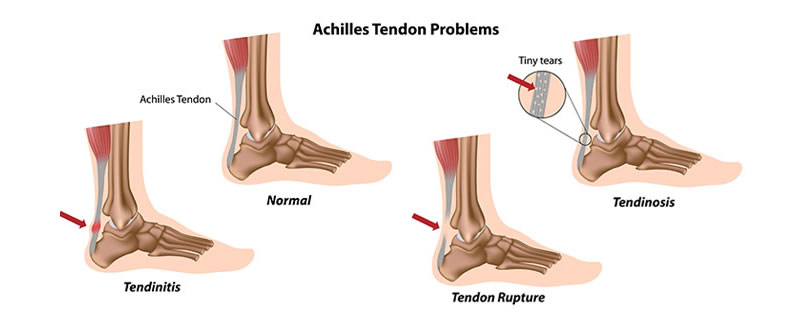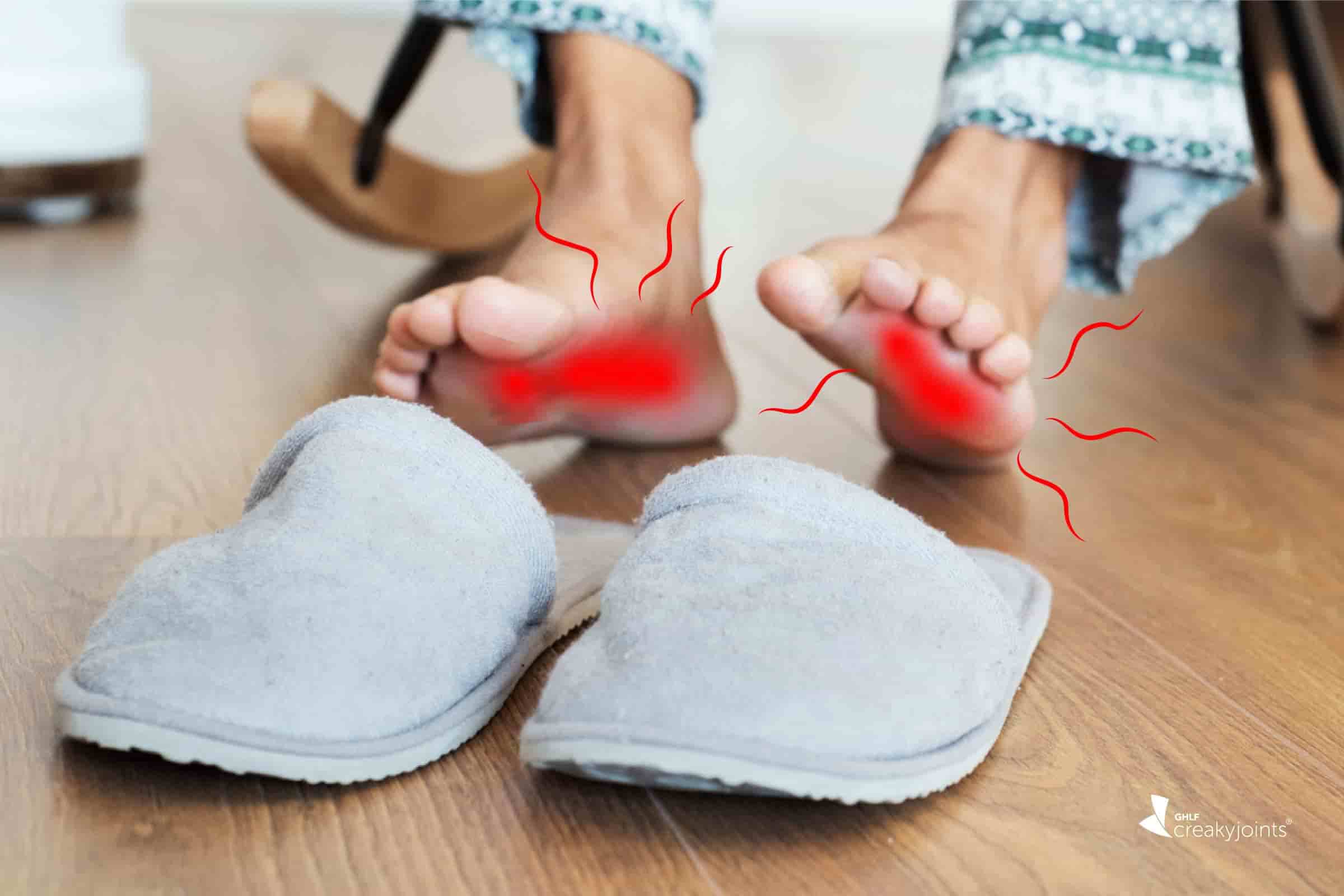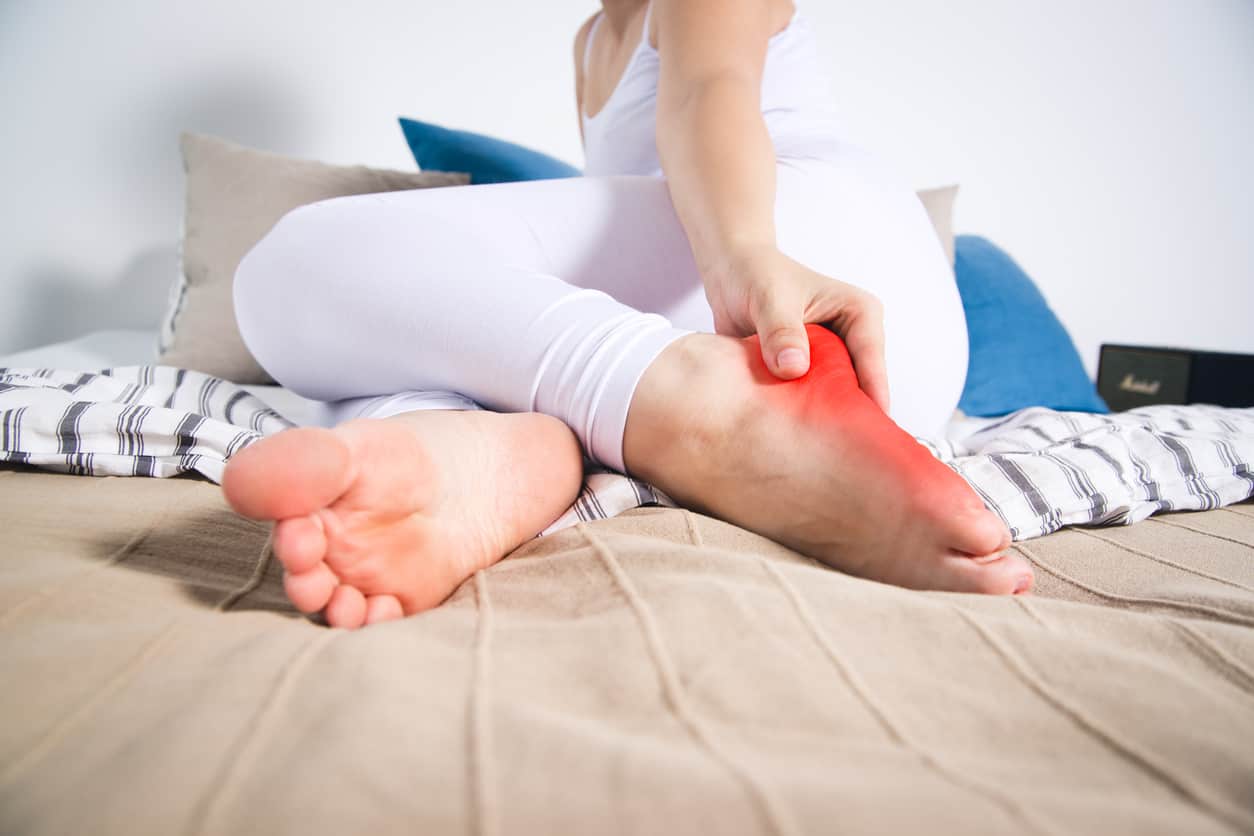HOW COVID-19 IS AFFECTING FOOT?
Spending more time at home during the COVID-19 pandemic has caused more foot pain than usual.
The COVID-19 pandemic has impacted the world. It has led to various changes, mainly the temporary closure of some schools, gyms, salons, restaurants and other businesses. Due to the pandemic many people had to transition to working from home. Many of these changes affect various elements of your health, including use of your feet and related problems. This has also led to numerous medical issues.
One primary factor causing the increase in COVID-19-related foot problems relates to the foot condition during lockdown. There are many people during work from home who prefer being barefoot or wearing socks at home for extended periods of time. Even the young and healthy people who’ve discarded their shoes have reported foot pain along with injuries such as stress fractures. They also face problems such as padding around with no shoes can exacerbate the foot pain symptoms of people with arthritis might often experience pain, stiffness, and swelling in their feet and ankles.

WHAT ARE THE COVID-RELATED FOOT PROBLEMS?
After a prolonged lockdown the transition to work or school from home has caused various foot problems. People are not used to wearing shoes and now they spend most of their time barefoot or stocking-footed.
Being without shoes might feel good for the short term. You are at high risk of foot problems due to lack of arch and foot support, including:
1. Plantar Fasciitis:
It is one of the most common causes of heel pain. It is caused by the inflammation of a thick band of tissue running across the bottom of your foot and connecting your heel bone to your toes. People experience stabbing pain usually with their first steps in the morning. It mostly affects runners over the age of 40 especially those who might be carrying extra weight, flat feet or high arches. Mostly people quarantining at home during the COVID-19 pandemic replace trips to the gym with daily running or walking. They might walk barefoot or wear flip flops at home for the rest of the day. Moreover, some people have become more sedentary during stay at home orders.
Cause: Plantar fasciitis runs across the bottom of the foot connecting the heel to the front of the foot. It helps to absorb the stress and strains placed on the foot, high pressure combined with tightness of the calf or Achilles tendon leads to inflammation of the fascia. This would result in stabbing or burning pain, particularly with the first steps of the morning.
Symptoms: Main symptoms include-
People with serious Crohn’s disease might also experience:
- Heel pain
- Foot pain
- Stiffness
- Tenderness
- Difficulty in walking and running
A sign of abnormal tension or tightness leads to plantar fasciitis. It results in a bony prominence (heel spur) that develops where the inflamed plantar fascia attaches to the heel bone (calcaneus).

2. Metatarsalgia:
This occurs when the ball of your foot becomes painful and inflamed. It develops mainly due to activities that involve running and jumping. There are other causes as well, such as foot deformities and ill-fitting shoes like too tight or too loose.
Cause: It could be caused from a single factor or due to multiple factors working together such as:
- Intense training or activity
- Certain foot shapes
- Foot deformities
- Excess weight
- Poorly fitted shoes
- Stress fractures
- Morton’s neuroma
Symptoms: You might experience a burning, sharp or aching pain in the ball of your foot and that worsens as you stand, run, walk or flex your feet.
- Sharp,burning or aching pain in the ball of your foot
- Pain worsens when you stand, run, flex your feet or walk
- Sharp or shooting pain leading to numbness, or tingling in your toes
- Feeling of having a pebble in your shoe
3. Achilles tendinitis: It is an injury caused due to overuse of the band of tissue connecting your calf muscles at the back of the lower leg to your heel bone. The pain often begins as a mild ache in the back of the leg or above the heel after running or other sports activity.
Cause: It is mainly caused by repetitive or intense strain on the Achilles tendon. This tendon is usually overused when you walk, run, jump or push up on your toes causing intense pain. The tendon might weaken with age making it more susceptible to injury. It also affects people participating in sports only on certain days or who have suddenly increased the intensity of their running programs.
Symptoms: You might experience symptoms such as:
- Swelling along with discomfort in the back of your heel
- Tight calf muscles
- Limited range of motion when flexing your foot
- Skin of the heel overly warm to the touch
4. Tendonitis:
It results from inflammation or irritation of a tendon occurring in your foot. It results by overcompensating or correcting for other conditions. It is described usually as a dull ache with tenderness and mild swelling. To prevent the conditions and avoid pain or injury you should use a specific pair of supportive athletic shoes or slippers to wear while in your home. Shoes not only support your arch and foot, they also protect your foot from injuries, like stepping on a sharp object or stubbing your toes. A sharp object penetrating your skin could cause an infection or become lodged deeper in the tissue. Toe stubbing is painful and the primary cause of toe fractures.
Cause: It is commonly caused by sudden injury or repetition of a movement over time.
Tendonitis might develop if your job or hobbies involve repetitive movements aggravating the tendons. People suffering with diabetes and rheumatoid arthritis are prone to develop tendonitis.
Symptoms: The main symptoms would include:
- Pain which worsens on movement
- A feeling of crackling or grating of tendon as it moves
- Swelling, heat, and redness
- A lump might develop along the tendon
- The symptoms might last for a few days to several weeks or months.

HOW TO CARE FOR FOOT DURING COVID?
It is necessary to visit a podiatrist if you have the following conditions:
- Post-operative care
- Injuries (sprains or trauma)
- Infections
- Ingrown toenails
- Wounds
- Foot ulcers
- Calf pain accompanied with warmth, redness, or swelling, possibly due to blood clot
A bit of preventive care can also support healthy feet such as:
- Stay active: Practice exercise such as sit-ups, pushups, planks, squats and leg lifts or enroll in virtual fitness classes online. If possible, get outside for fresh air without putting yourself at risk. Go for a walk, run or hike while practicing social distancing. While working at home, take scheduled breaks to get up and walk around your home. Avoid wearing narrow shoes even at home and also avoid walking on hard surfaces barefoot if you suffer from foot pain.
- Examine your feet regularly to check for bumps, lumps or other changes.
- Wearing comfortable, proper fitting shoes, especially for exercise.
- Use padding, insoles or special footwear as prescribed.
OUTLOOK
COVID-19 pandemic has affected everyone in various ways. If you are facing any foot related issue you should consult a podiatrist. A delay might worsen the condition making it serious and might also lead to hospitalization or amputation. Addressing the issue sooner will give you a positive outcome.
If you or anyone you know is suffering from foot problems, our expert providers at Specialty Care Clinics will take care of your health and help you recover.
Call (469) 545-9983 to book an appointment with our specialists.
